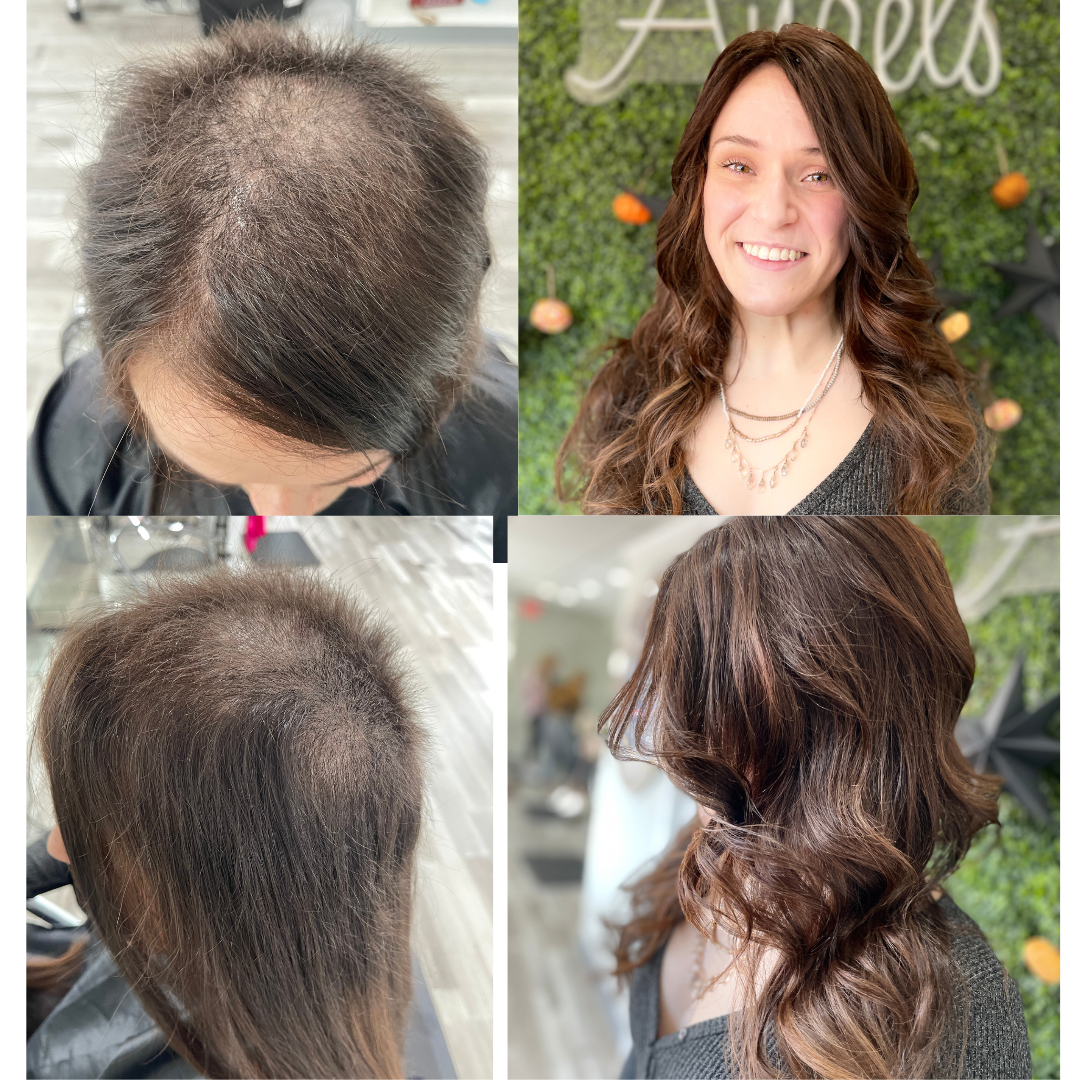Trichotillomania: Causes, Symptoms, Treatment
Taming The Tug: Navigating Life with Trichotillomania
Trichotillomania, also known as hair-pulling disorder, is not just a bad habit, but a mental health condition that affects both adults and children, causing significant distress and impairment. This disorder is characterized by the irresistible urge to pull out hair, leading to hair loss and bald patches. In this blog, we will dive into the causes, symptoms, and treatment options for trichotillomania, with the aim of increasing understanding and providing support for those affected.
Understanding Trichotillomania
Trichotillomania, or hair-pulling disorder, is classified as a mental disorder in the Diagnostic and Statistical Manual. It is characterized by an increasing sense of tension that is relieved by pulling out hair. This hair-pulling behavior often occurs in areas of the body with hair, such as the scalp, eyelashes, and eyebrows, leading to bald patches and uneven hair growth.
This disorder can be triggered by negative emotions, boredom, or stress, with hair pulling providing temporary relief from these feelings. However, trichotillomania can cause significant distress and impairment in daily functioning, impacting social and occupational areas of life.
Understanding trich is crucial for finding effective management strategies and treatment options that can help individuals regain control of their hair-pulling behavior and improve their overall well-being.
Click Here To View A Before & After Video
Definition and Overview
Trichotillomania is characterized by the recurrent pulling of hair, resulting in hair loss. Many patients with trichotillomania report that there was a stressful situation that occurred before the hair-pulling behavior. It is classified as an impulse control disorder, with an increasing sense of tension preceding hair pulling, followed by feelings of relief or gratification. The hair-pulling behavior can cause distress, impairment, and negative emotions, such as guilt, shame, and frustration.
The areas of the body commonly affected by trichotillomania include the scalp, eyelashes, and eyebrows, although hair pulling can occur in other areas with hair as well. Trich is often a chronic condition, with hair pulling becoming a habit that is difficult to control.
Seeking consultation with a dermatologist can help address the physical effects of trich, such as bald patches, scarring, infection, and complications that may arise with long-term hair pulling.
Recognizing the Symptoms
Hair-pulling behavior in trichotillomania can lead to visible physical indicators, as well as psychological signs of distress. By recognizing these symptoms, individuals and healthcare providers can identify trich and seek appropriate treatment options.
Physical Indicators
One of the significant physical indicators of trichotillomania is hair loss, which can result in bald patches and uneven hair growth. Hair-pulling behavior commonly targets areas with hair, such as eyelashes, eyebrows, scalp, and other areas of the body. These visible signs of hair pulling are important in identifying trich and seeking treatment.
Consulting with a dermatologist who specializes in hair disorders can help address the physical effects of trichotillomania, with possible treatment options including hair regrowth treatments, scalp health management, and hair loss prevention techniques.
Psychological Signs
Trichotillomania not only manifests with physical indicators but also with significant distress, impairment, and negative emotions. Individuals with trich often experience feelings of embarrassment, distress, and impairment in social and occupational functioning.
Negative emotions, such as guilt, shame, and frustration, are commonly associated with trich, with hair-pulling behavior serving as a way of relieving tension and negative emotions temporarily. Understanding the psychological signs of trich is crucial for early intervention and treatment, with options such as behavioral modification, habit reversal training, and therapy being possible treatment approaches.
Delving into the Causes
While the exact cause of trichotillomania is still unknown, researchers have identified potential genetic and environmental factors that contribute to the development of this disorder. Understanding these causes can help healthcare providers tailor treatment options and support individuals with trich.
Genetic Factors
Trichotillomania has been found to have a genetic component, with a higher incidence rate in individuals with family members affected by the disorder. Certain genes are believed to increase the risk of developing trich, but further research is needed to fully understand the genetic basis of this disorder.
Identifying genetic factors can help with early diagnosis, treatment, and support of individuals with trichotillomania, potentially leading to more effective management of hair-pulling behavior.
Environmental Triggers
In addition to genetic factors, various environmental triggers can contribute to hair-pulling behavior in trich. Stress, trauma, boredom, and other negative emotions are among the possible triggers that can exacerbate hair-pulling behavior.
Identifying and addressing these triggers are important in managing trichotillomania, with the goal of creating a supportive and stress-free environment that promotes healthy coping mechanisms. Understanding the impact of environmental triggers is key to effective treatment of trich. with options such as therapy, stress reduction techniques, and behavior modification strategies being possible treatment approaches.
Who is at Risk?
Trichotillomania can develop at any age, but it often starts in adolescence. Both males and females can be affected by trich, with a higher prevalence in females. Young adults are particularly vulnerable, with increasing cases reported.
Recognizing the age and gender considerations of trichotillomania is important for treatment planning, as early intervention and support can help prevent lifelong problems with hair-pulling disorder.
Age and Gender Considerations
Trichotillomania can affect individuals of all ages, but it is often first noticed in adolescence. The disorder can persist into adulthood if not addressed, potentially leading to lifelong problems with hair-pulling behavior.
While trichotillomania can affect both genders, there is a higher prevalence of this disorder in females. Recognizing these age and gender considerations can help healthcare providers tailor treatment options, support, and education to specific populations, increasing the chances of successful treatment outcomes.
Family History and Mental Health Conditions
Understanding your family history can help identify possible genetic factors that contribute to trichotillomania. If you have a family member with trich, your risk of developing the disorder may be higher.
Additionally, mental health conditions, such as anxiety disorders, depression, and bipolar disorder, are often seen co-occurring with trichotillomania. Recognizing the connection between trich and mental health is crucial for treatment options, with healthcare providers being able to provide guidance on managing trich long-term mental health conditions.
Discussing your family history with a healthcare provider can help determine appropriate treatment approaches, with options such as therapy, medication, and behavior modification techniques being possible treatment options for trichotillomania.
Effective Treatment Strategies
While trichotillomania can be a challenging disorder to manage, treatment options are available that can help individuals regain control of their hair-pulling behavior and improve their overall well-being.
Therapeutic Approaches
One of the commonly used therapeutic approaches for trichotillomania is habit reversal training, which focuses on increasing awareness of hair-pulling Treatment - Trichomoniasis
behavior and replacing it with alternative actions, with the aim of reducing the hair-pulling habit.
Cognitive-behavioral therapy (CBT) is another treatment approach that can help individuals with trichotillomania identify triggers, thoughts, and emotions associated with hair-pulling, and develop coping mechanisms to control and reduce hair-pulling behavior.
Acceptance and Commitment Therapy (ACT) and Dialectical Behavior Therapy (DBT) are additional therapeutic approaches that can help individuals with trich develop mindfulness skills, emotional regulation, and distress-tolerance techniques, with the aim of reducing hair-pulling behavior and improving overall mental health.
How Can Lifestyle Modifications Support Recovery? Help With Trich
In addition to therapeutic approaches, positive lifestyle modifications can help support recovery from trich and reduce hair-pulling behavior to help with trich.
Implementing regular exercise, such as yoga or other stress-reducing activities, can help manage hair-pulling urges by providing alternative outlets for tension and negative emotions. Engaging in stress-reducing activities, such as meditation, can also help individuals with trich manage hair-pulling behavior.
Creating a supportive environment with friends, family, and healthcare professionals is essential in the recovery process, as it provides understanding, encouragement, and guidance throughout the treatment journey. Practicing self-care, such as getting enough sleep, maintaining a balanced diet, and engaging in activities that promote positive feelings, can also support overall mental health and well-being.
Supplements, alternative therapies, and additional treatment options may complement existing trich treatment, but consultation with a healthcare provider is recommended to ensure safety and effectiveness.
Hair Topper & Hair Extensions Create a Barrier to prevent pulling to help with trich
Conclusion
Trichotillomania is a complex disorder that requires understanding, support, and effective treatment strategies. It's important to recognize the physical and psychological signs of trich to provide timely intervention and support to those who are affected. While genetic factors and environmental triggers play a role in the development of trichotillomania, it is crucial to remember that anyone can be at risk. The good news is that there are effective therapeutic approaches available to help manage and overcome trich. Additionally, making lifestyle modifications such as stress management techniques, healthy coping mechanisms, and seeking social support can greatly support recovery. If you or someone you know is struggling with trich, reach out to a healthcare professional for guidance and support. Remember, you are not alone in this journey.
Hair Loss background
With Alopecia Areata, fungal infections, other autoimmune diseases, thinning hair by Trichotillomania which removes hair follicles by physical means. At Noelle Salon, we cover the various approaches to hair solutions to treat hair loss, female pattern baldness, balding spots, and other conditions to which you lose hair. At Noelle Salon, we focus on hair growth techniques. Hair systems and hair extension maintenance is part of the journey while wearing them. For Trichotillomania, as our hair grows they both will loosen, and service is required. The difference between a hair system and hair extensions for Trichotillomania clients varies based on the location of hair loss.





